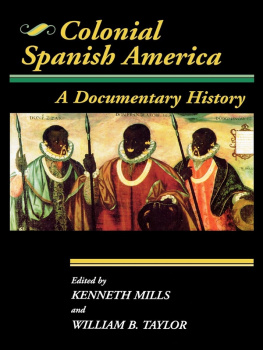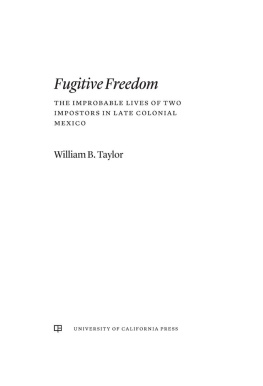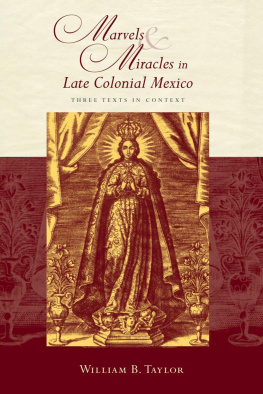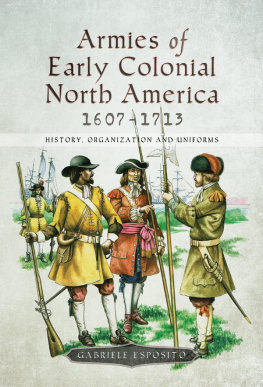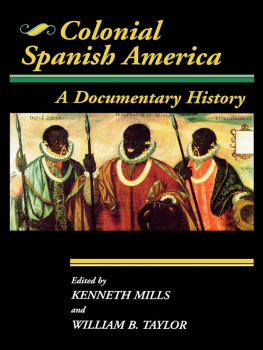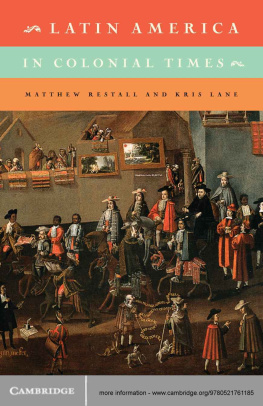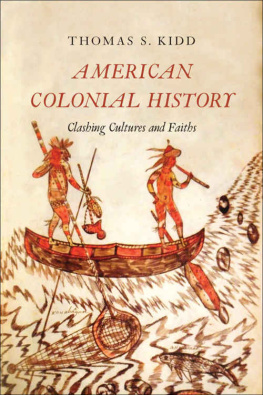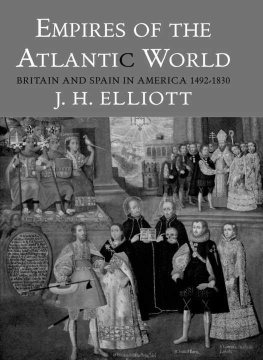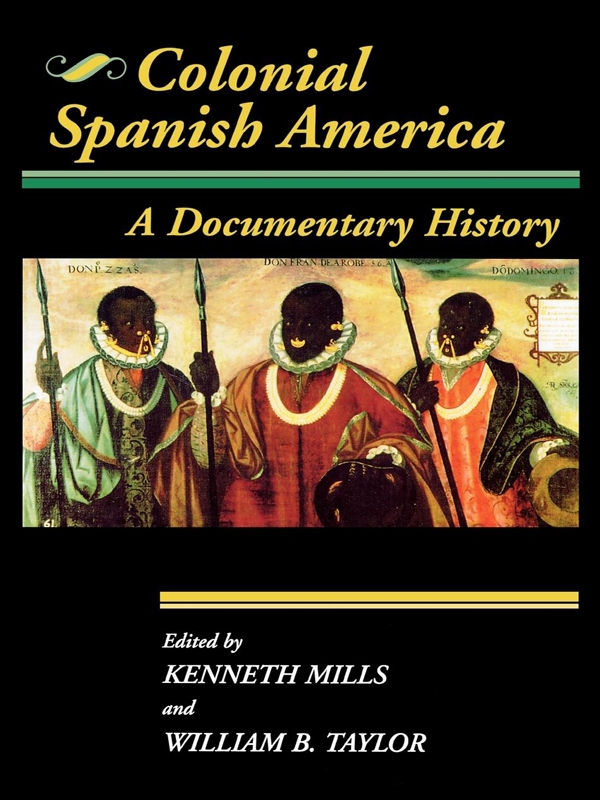William B. Taylor - Colonial Spanish America: A Documentary History
Here you can read online William B. Taylor - Colonial Spanish America: A Documentary History full text of the book (entire story) in english for free. Download pdf and epub, get meaning, cover and reviews about this ebook. year: 1998, publisher: Rowman & Littlefield Publishers, genre: Religion. Description of the work, (preface) as well as reviews are available. Best literature library LitArk.com created for fans of good reading and offers a wide selection of genres:
Romance novel
Science fiction
Adventure
Detective
Science
History
Home and family
Prose
Art
Politics
Computer
Non-fiction
Religion
Business
Children
Humor
Choose a favorite category and find really read worthwhile books. Enjoy immersion in the world of imagination, feel the emotions of the characters or learn something new for yourself, make an fascinating discovery.
- Book:Colonial Spanish America: A Documentary History
- Author:
- Publisher:Rowman & Littlefield Publishers
- Genre:
- Year:1998
- Rating:3 / 5
- Favourites:Add to favourites
- Your mark:
Colonial Spanish America: A Documentary History: summary, description and annotation
We offer to read an annotation, description, summary or preface (depends on what the author of the book "Colonial Spanish America: A Documentary History" wrote himself). If you haven't found the necessary information about the book — write in the comments, we will try to find it.
Religion and society are the integral themes of Colonial Spanish America. Religion becomes the nexus for much of what has been treated as political, social, economic, and cultural history during this period. Society is just as inclusive, allowing the reader to meet a variety of individuals-not faceless social groups. While some familiar faces and voices are included-namely those of Spanish conquerors, chroniclers, and missionaries-other, less familiar points of view complement and complicate the better-known narratives of this history. In treating Iberia and America, before as well as after their meeting, apparent contradictions emerge as opportunities for understanding; different perspectives become prompts for wider discussion. Other themes include exploration; military and spiritual conquest; and the formation, consolidation, reform, and collapse of colonial institutions of government and the Church, and the accompanying changes in the economy and labor.
Colonial Spanish America: A Documentary History is an excellent tool for Latin American history survey courses.
William B. Taylor: author's other books
Who wrote Colonial Spanish America: A Documentary History? Find out the surname, the name of the author of the book and a list of all author's works by series.

